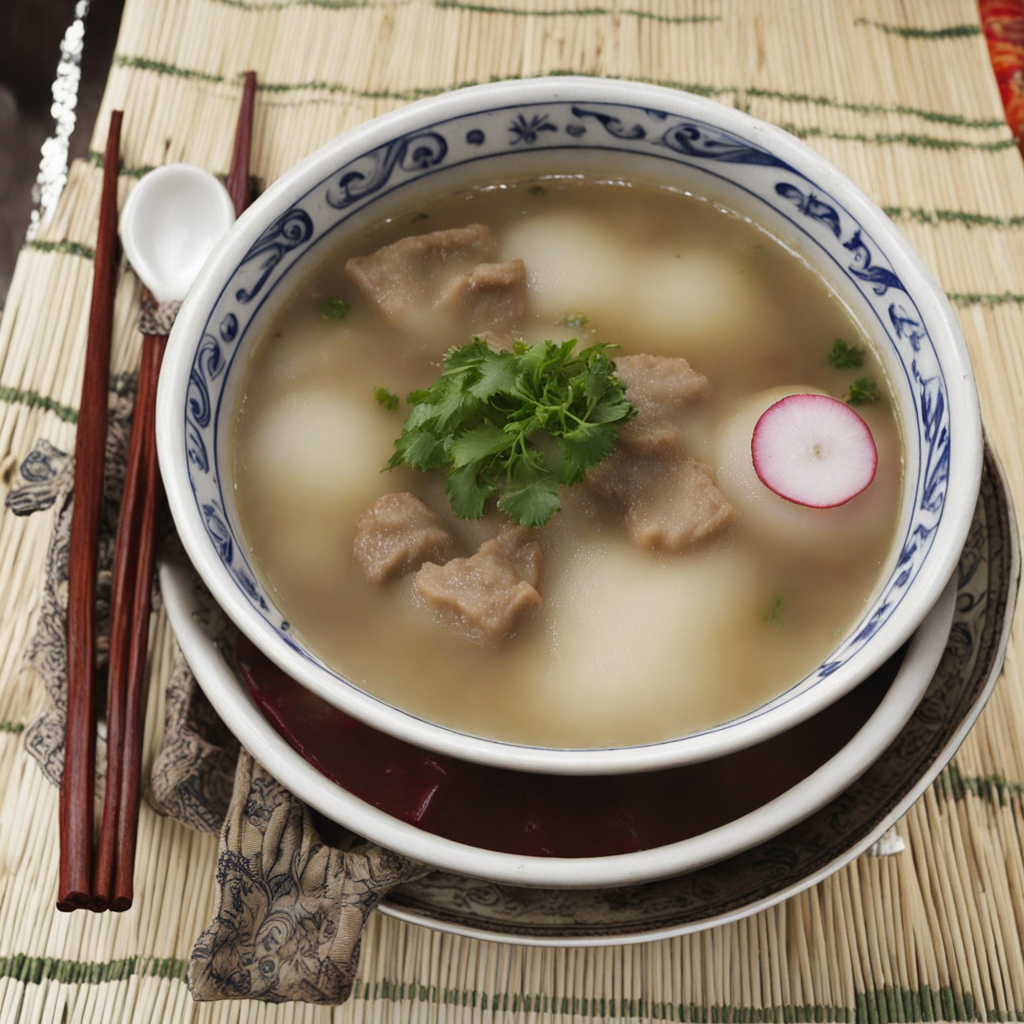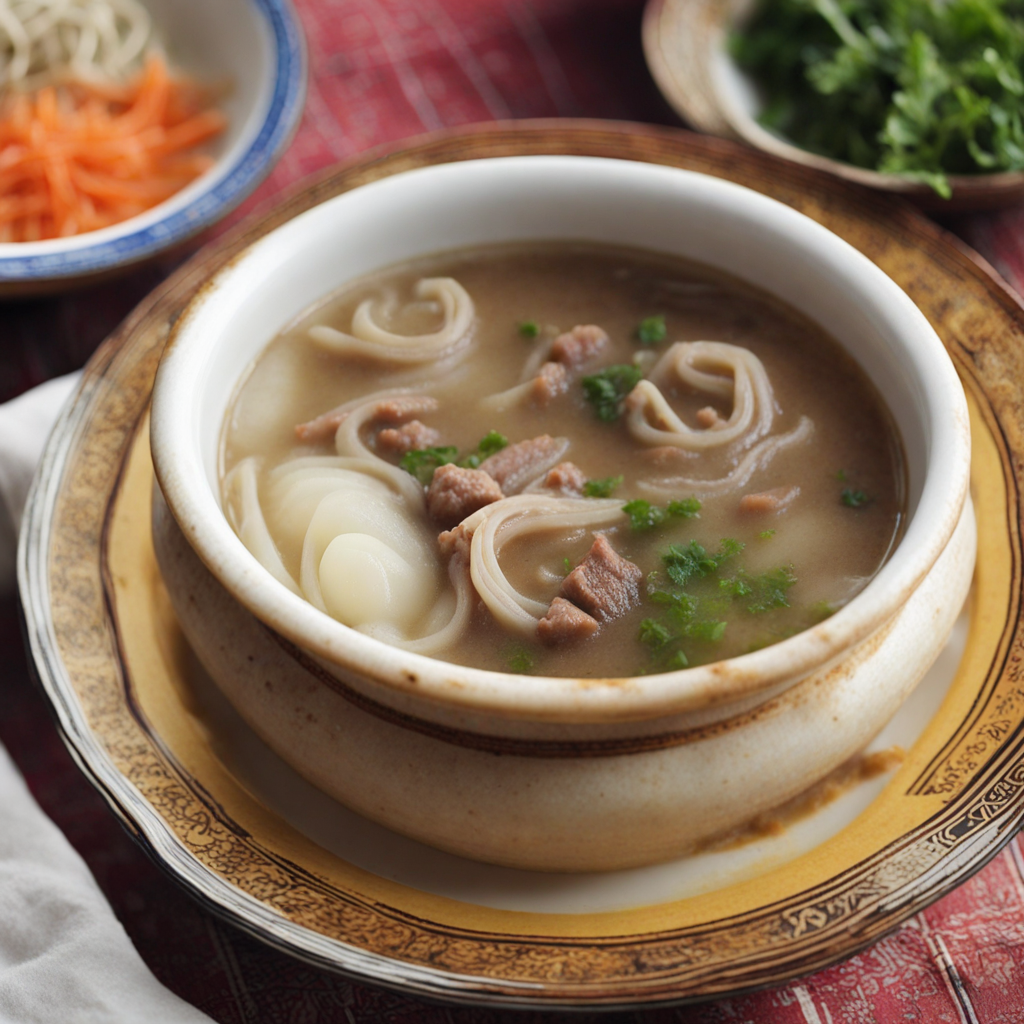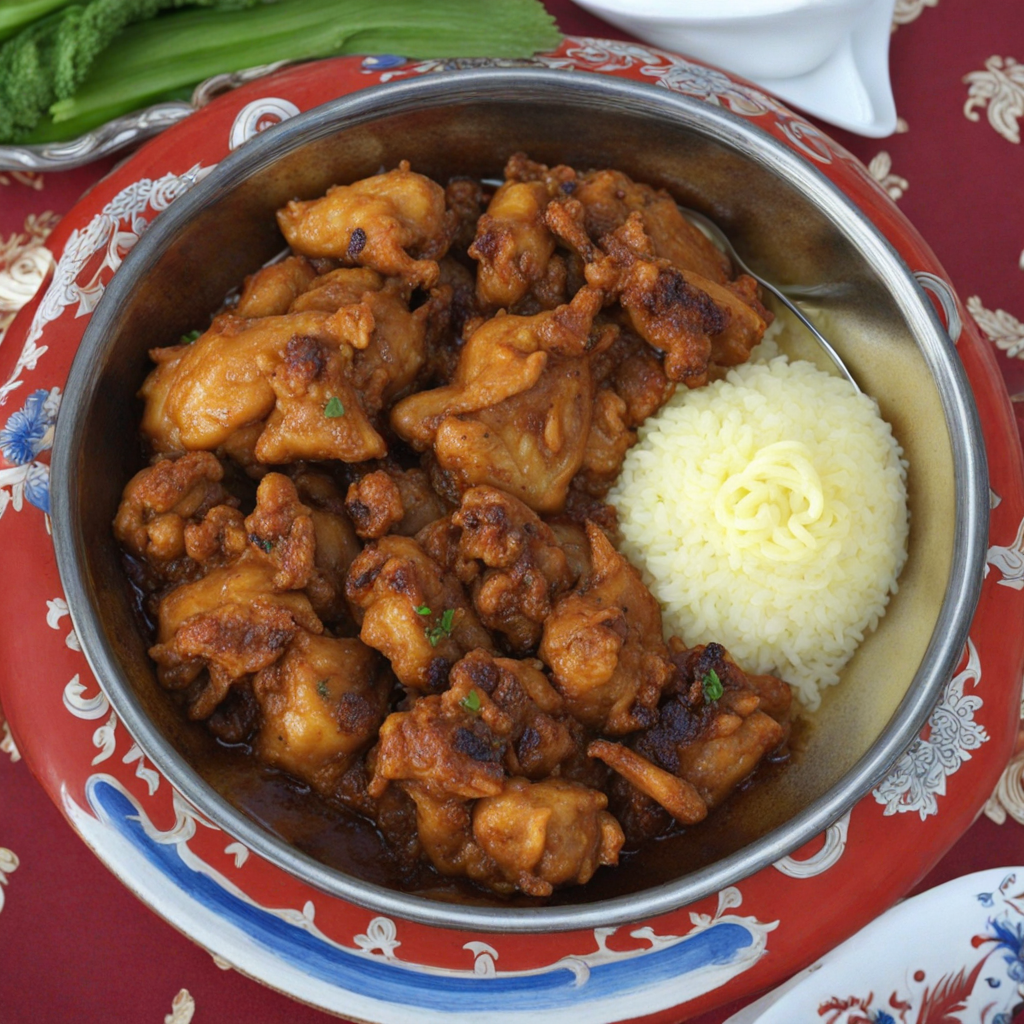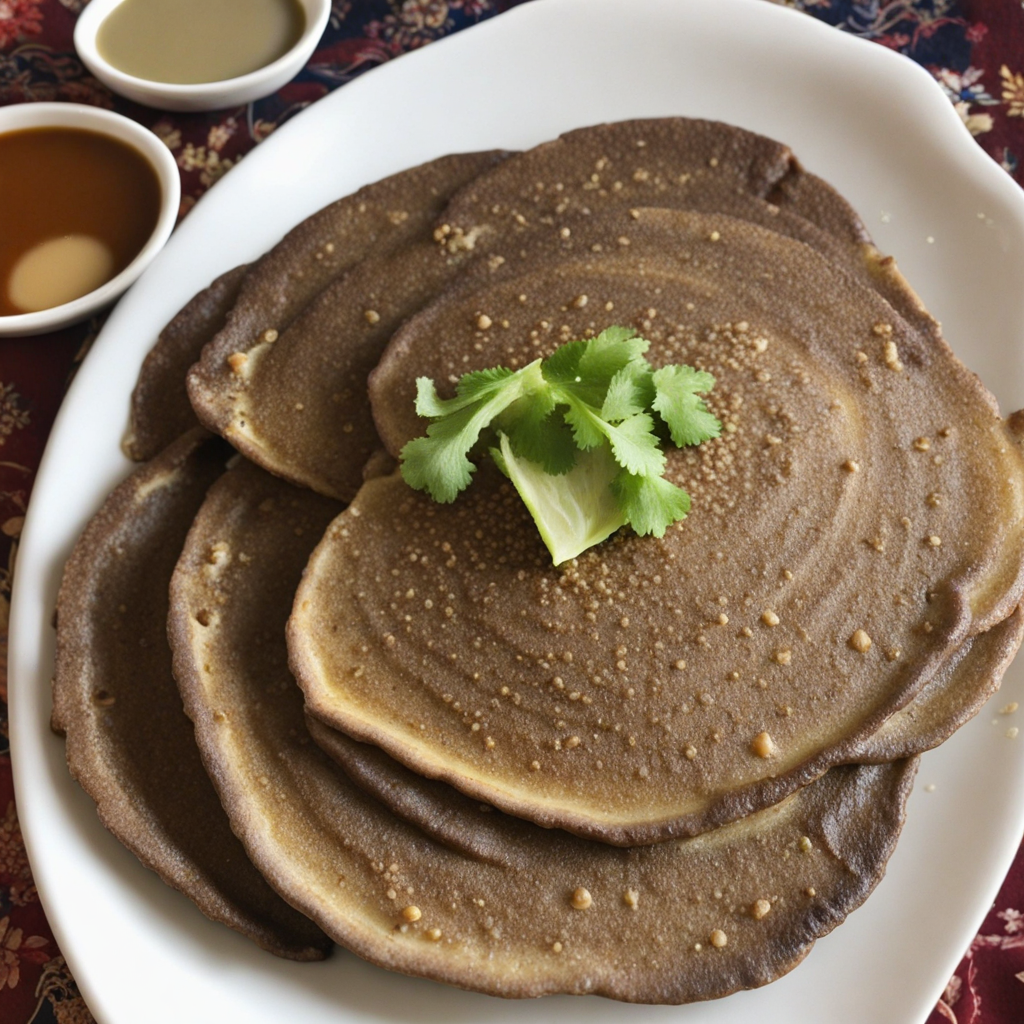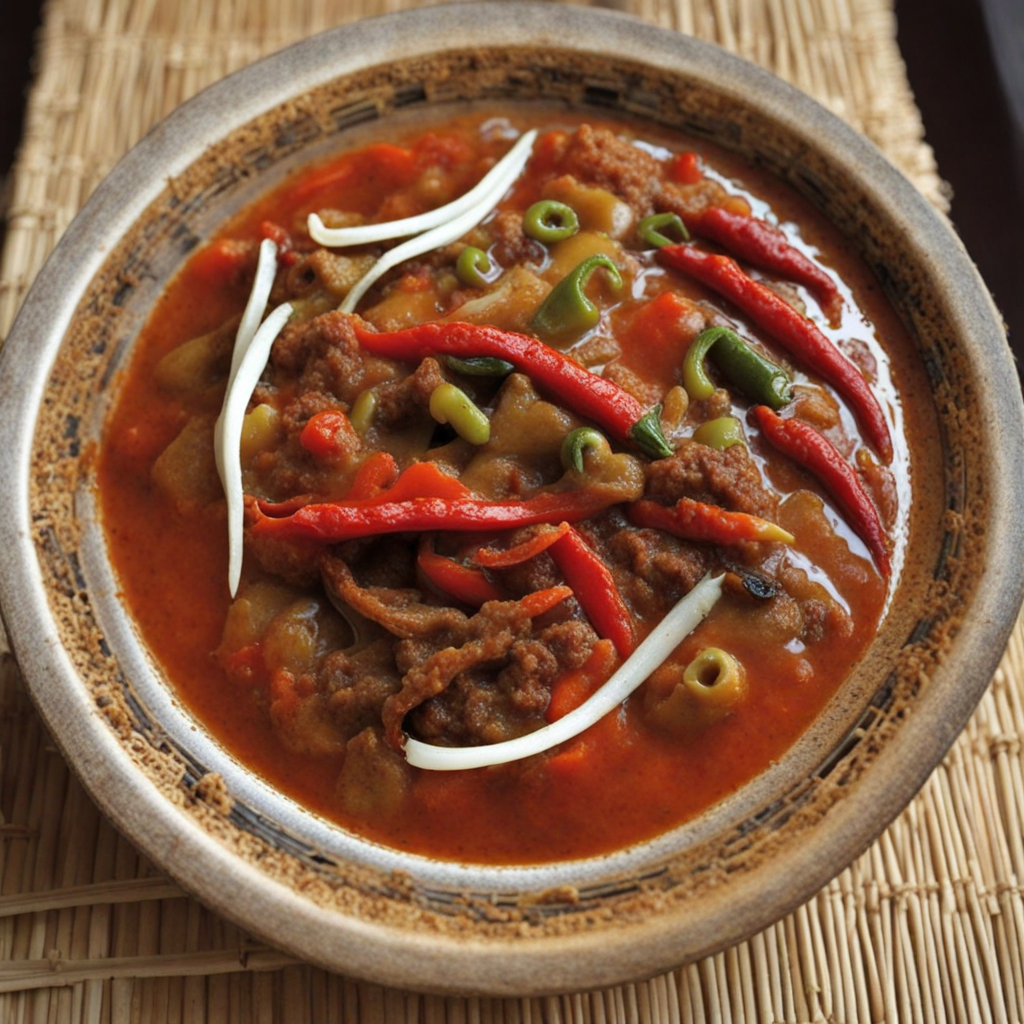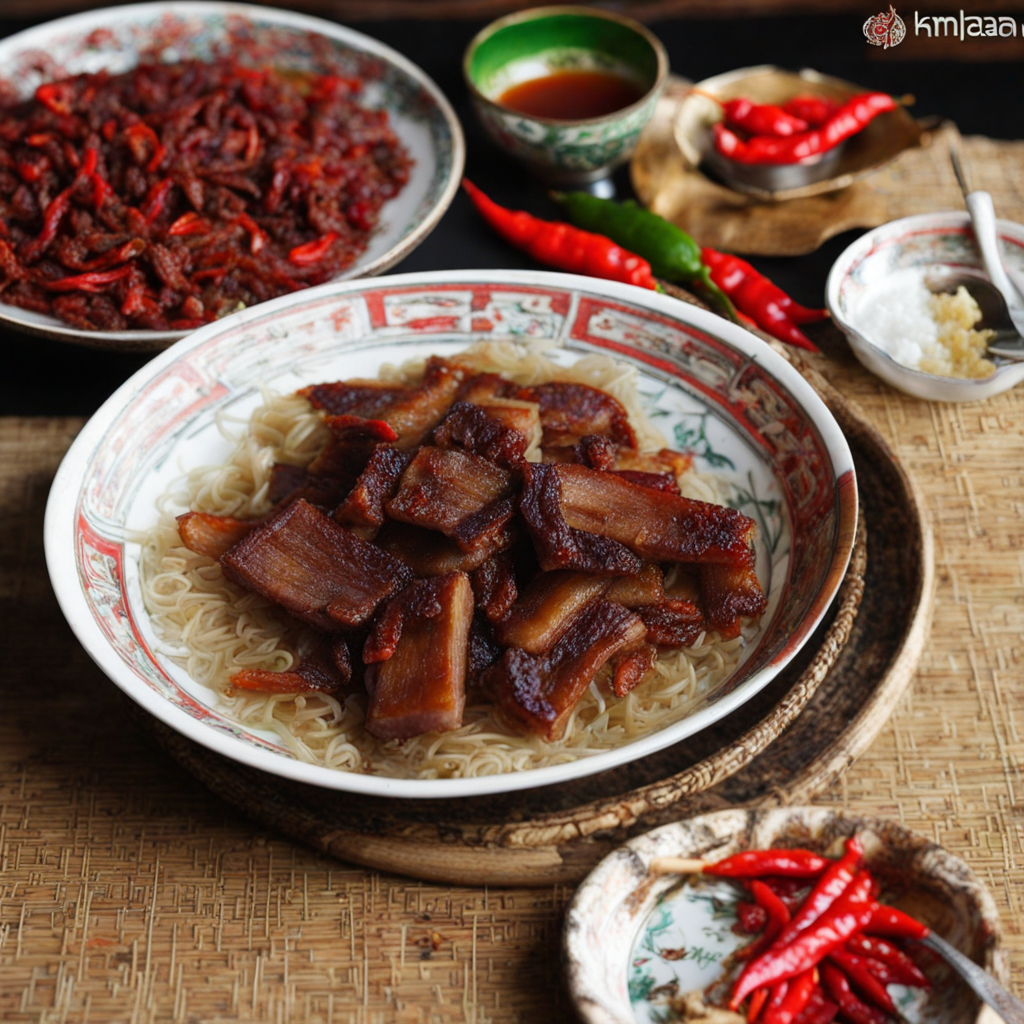Bathup
Bathup is a delightful Bhutanese dish that showcases the unique flavors and culinary traditions of the Himalayan kingdom. This hearty noodle soup is typically made with fresh handmade noodles, which are light and chewy, providing a wonderful base for the rich broth. The soup is often infused with a variety of spices, including garlic, ginger, and chilies, creating a warm and aromatic experience that awakens the senses. The addition of local vegetables such as radishes, leafy greens, and sometimes mushrooms adds a refreshing crunch and a burst of color, making it visually appealing as well. The broth in Bathup is usually made with a combination of meat, such as beef or chicken, although vegetarian versions are also popular and equally satisfying. The slow-cooked meat releases its flavors into the soup, resulting in a deeply satisfying and comforting dish that is perfect for colder weather. The use of Bhutanese chili, known as "ezay," adds a distinctive heat that is balanced by the other ingredients, allowing you to enjoy a complex taste profile that is both bold and comforting. Each spoonful is a harmonious blend of spicy, savory, and umami flavors that transport you straight to the heart of Bhutan. Served piping hot, Bathup is not just a meal; it’s a cultural experience that reflects the communal spirit of Bhutanese dining. Traditionally enjoyed with friends and family, it is often accompanied by a side of chili paste or pickled vegetables, allowing each diner to customize their experience to their personal taste. The joy of sharing this dish with others enhances its flavor, making it a memorable experience that showcases the warmth and hospitality of Bhutanese culture. Whether enjoyed at a local eatery or made at home, Bathup invites you to savor the essence of Bhutan in every delicious bite.
How It Became This Dish
The History of 'བ་ཐུབ།' (Bhatub) in Bhutan Introduction 'བ་ཐུབ།' (Bhatub), a traditional dish from Bhutan, is a delightful representation of the country's rich culinary heritage, deeply interwoven with its cultural and spiritual practices. This dish, often made with rice, vegetables, and sometimes meat, showcases the principles of Bhutanese cuisine—simplicity, seasonality, and a profound respect for local ingredients. To understand the significance of Bhatub, we must delve into its origins, cultural importance, and how it has evolved over time. Origins Bhatub is believed to have its roots in the agrarian practices of the Bhutanese people, who have cultivated rice for centuries. As agriculture developed in the fertile valleys of Bhutan, rice became a staple food, central to daily life and community gatherings. The word 'Bhatub' itself can be loosely translated to mean 'rice dish' in the Dzongkha language, emphasizing rice's foundational role in Bhutanese diets. Historically, Bhutan's diverse geography influenced the types of crops grown in different regions. In the warmer southern valleys, varieties of rice were cultivated, while in the higher altitudes, barley and millet were more common. Bhatub, therefore, reflects the local ingredients available, as different regions may prepare it with various vegetables and spices. The dish's adaptability is a testament to Bhutanese ingenuity in using what is locally available, fostering a strong connection between food and place. Cultural Significance Bhatub holds significant cultural weight in Bhutan. It is not merely a dish; it is a symbol of hospitality and community. Bhutanese people often prepare Bhatub for gatherings, festivals, and religious ceremonies, where sharing food is a vital part of the social fabric. The act of cooking and sharing Bhatub embodies the Bhutanese concept of 'Zhabdrung,' which emphasizes unity and harmony among people. Moreover, the preparation of Bhatub is often accompanied by traditional rituals and practices. For example, during auspicious occasions, families may prepare a special version of Bhatub, incorporating ingredients that are believed to bring good fortune and blessings. The dish is sometimes served with a variety of side dishes, including 'ema datshi' (chili and cheese stew), which adds flavor and richness, further enhancing its communal aspect. The deep-rooted belief in the connection between food and spirituality in Bhutan is also reflected in Bhatub. Many Bhutanese people view their meals as a form of mindfulness, where the process of cooking and eating is intertwined with gratitude and respect towards nature. This philosophy is particularly significant in a country that prioritizes Gross National Happiness over economic growth, highlighting the importance of well-being and environmental sustainability. Development Over Time As Bhutan has evolved, so too has Bhatub. While the core ingredients remain consistent—rice, vegetables, and sometimes meat—the preparation and presentation have adapted to contemporary tastes and lifestyles. The advent of globalization and increased access to various ingredients have allowed chefs and home cooks to experiment with Bhatub, incorporating influences from neighboring countries such as India and China. In urban areas, restaurants may offer a modernized version of Bhatub, featuring gourmet twists that appeal to a younger, more cosmopolitan clientele. For instance, chefs might introduce exotic vegetables or innovative cooking techniques, while still honoring traditional flavors. This evolution is not merely a departure from tradition; rather, it represents a fusion of old and new, a reflection of Bhutan's dynamic cultural landscape. Moreover, with the rise of tourism in Bhutan, Bhatub has become a culinary ambassador for the country. International visitors are often eager to experience authentic Bhutanese cuisine, and Bhatub is frequently highlighted on menus. This exposure has led to a renewed interest in traditional cooking methods and ingredients among younger Bhutanese, fostering a sense of pride in their culinary heritage. In recent years, there has also been a concerted effort to promote local farming and sustainable practices, ensuring that the ingredients used in Bhatub are sourced from local farmers. This not only supports the local economy but also emphasizes the importance of preserving traditional agricultural practices that have been handed down through generations. Conclusion Bhatub is more than just a dish in Bhutan; it is a vibrant tapestry of history, culture, and community. Its origins are rooted in the agricultural practices of the Bhutanese people, and its cultural significance is evident in the way it brings people together. Over time, Bhatub has adapted and evolved, reflecting the dynamic nature of Bhutanese society while still honoring its rich culinary heritage. As Bhutan continues to navigate the challenges and opportunities of modernization, Bhatub stands as a testament to the resilience of its culinary traditions. It serves as a reminder of the importance of place, seasonality, and community in food, celebrating the simple yet profound act of sharing a meal. In every bite of Bhatub, one can taste the essence of Bhutan—a nation that values its history while embracing the future, all while nourishing the body and soul.
You may like
Discover local flavors from Bhutan


